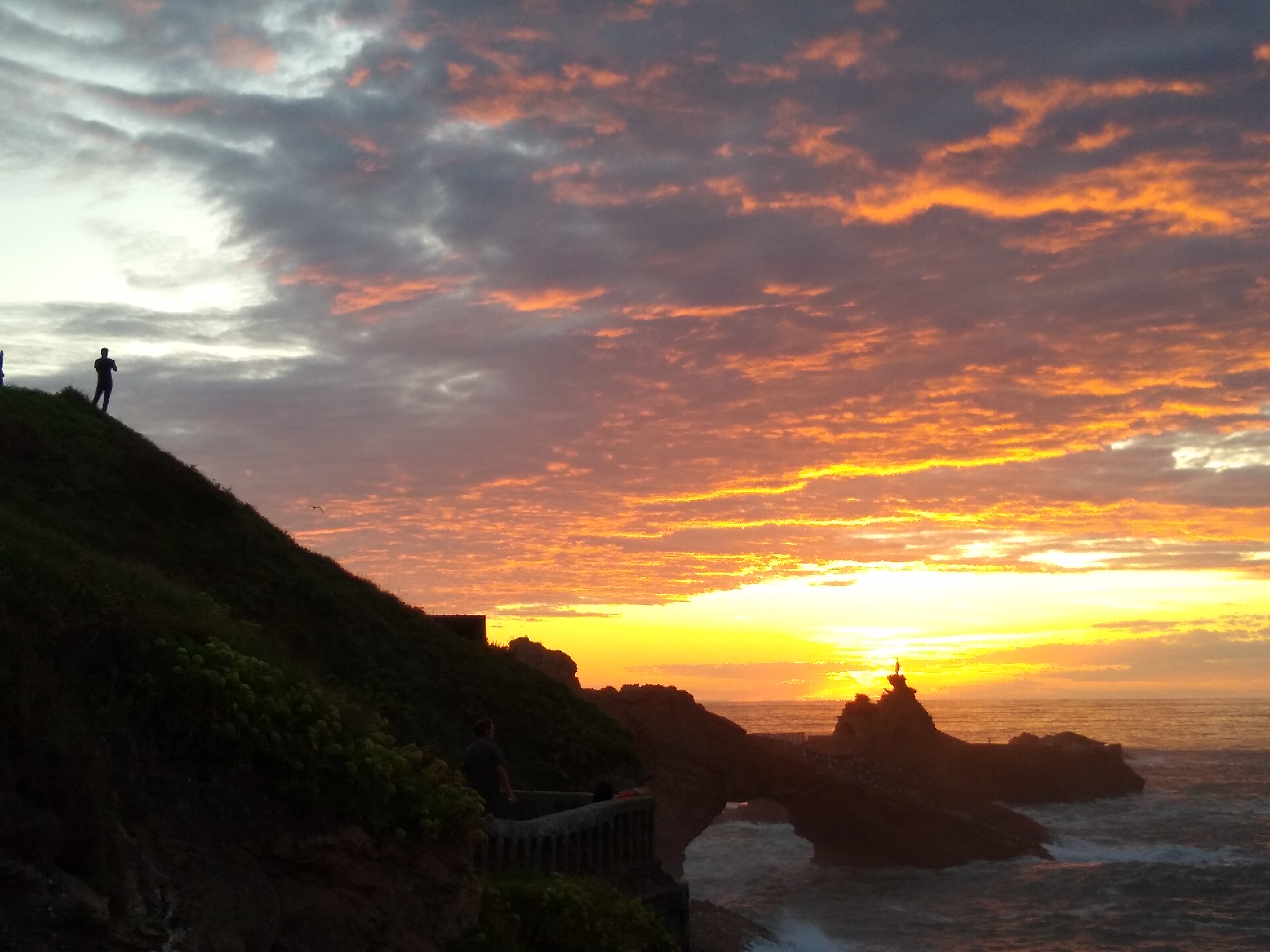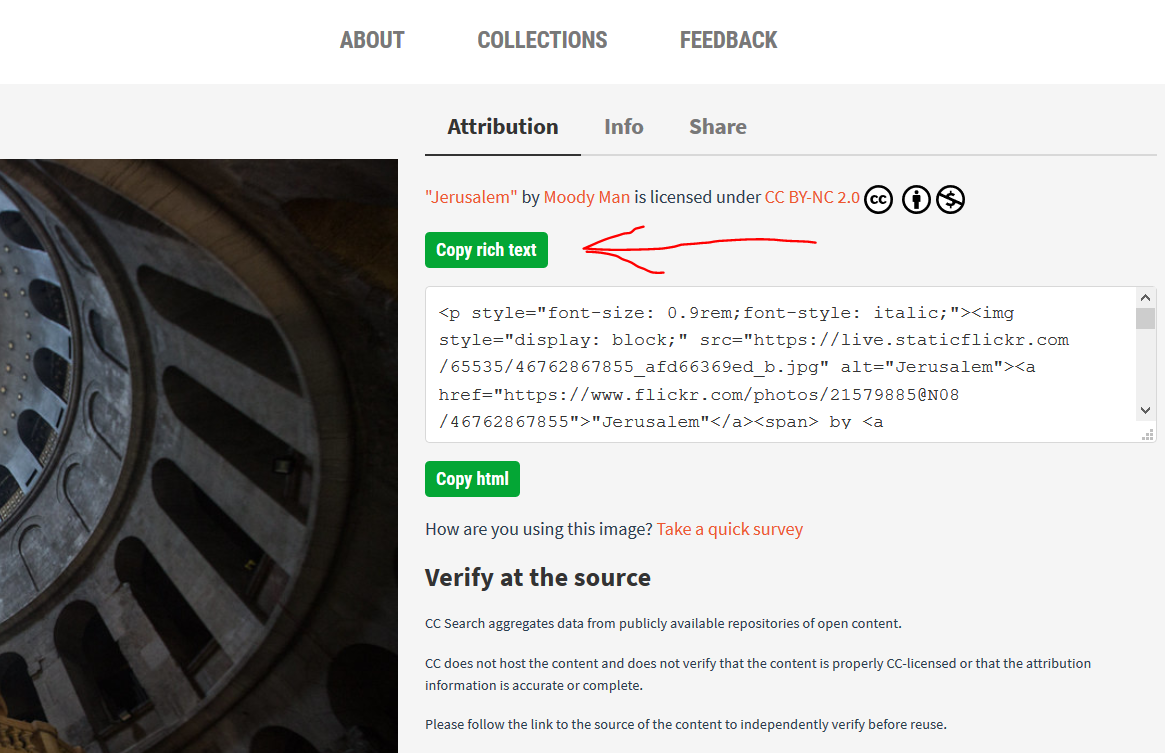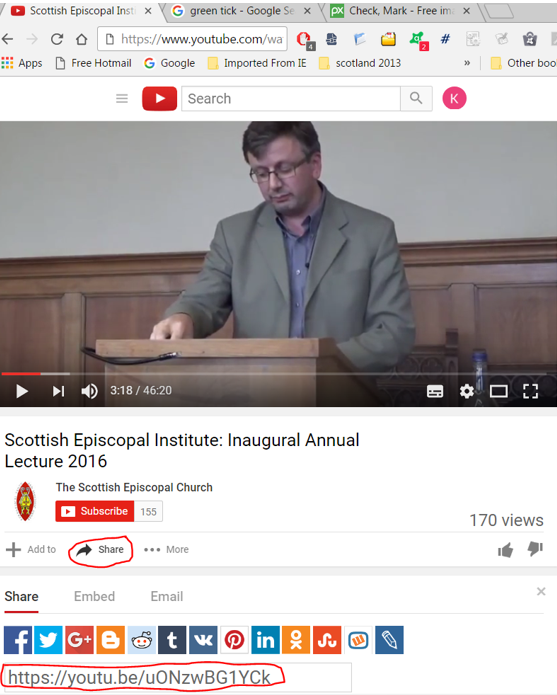Using images and videos within copyright rules
| Site: | Example |
| Course: | Teaching with Moodle - A week by week guide |
| Book: | Using images and videos within copyright rules |
| Printed by: | Guest user |
| Date: | Tuesday, 2 December 2025, 8:58 PM |
Description
A Book looking at copyright, Creative Commons and other legal ways of managing and working with images. Look for the table of contents on the top right.
1. The use of images and crediting their creators
Images and videos are essential to producing engaging online material. However not all material can be used legitimately on your Moodle site. This depends on the copyright rules. Any images used need to be attributed appropriately in a similar way to quoting books in an essay.
This guide will not cover how to work out the copyright rules on everything. Neither can it be taken as legal advice. What it will do is signpost sources of content that can freely be used within a Moodle site, provided you attribute them.
There are of course two other ways to keep within copyright rules
1) Pay for access to copyrighted pictures or videos.
2) Create pictures yourself. There are no restrictions on how I can use the picture below. I know because I took it.

2. Creative Commons licences
The safest way of identifying and using images that are free of charge is to use a system known as Creative Commons Licensing. Creative Commons (CC) is an American non-profit organization devoted to expanding the range of creative works available for others to build upon legally and to share. For a brief introduction to Creative Commons this 3 minute video (free to share on Vimeo) gives you a basic introduction. For more information, have a look at its website here.
The Creative Commons website is an excellent place to start if you are searching for a Creative Commons image. You will find the search pages here. Just enter the term you are looking for and check or uncheck the relevant boxes according to the kind of resource you are looking for and where you would like to find it.
There are seven levels of CC licences, but they are different combinations of answers to three questions
1) Can the material be used commercially (education is not "commercial")?
2) Can people adapt your material (usually a good thing to allow)?
3) If they do adapt it do you require that they also share their material freely (sharealike)?
| Creative Commons licence | Rules |
| CC0 "Public Domain" |
No rights reserved. Legally people do not have to cite the source, but it is good practice to do so |
| CC BY | This license lets others distribute, remix, tweak, and build upon your work, even commercially, as long as they credit you for the original creation. |
| CC BY-SA | This license lets others remix, tweak, and build upon your work even for commercial purposes, as long as they credit you and license their new creations under the identical terms. |
| CC BY-ND | This license lets others reuse the work for any purpose, including commercially; however, it cannot be shared with others in adapted form, and credit must be provided to you. |
| CC BY-NC | This license lets others remix, tweak, and build upon your work non-commercially, and although their new works must also acknowledge you and be non-commercial, they don’t have to license their derivative works on the same terms. |
| CC BY-NC-SA | This license lets others remix, tweak, and build upon your work non-commercially, as long as they credit you and license their new creations under the identical terms. |
| CC BY-NC-ND |
This license is the most restrictive of our six main licenses, only allowing others to download your works and share them with others as long as they credit you, but they can’t change them in any way or use them commercially. |
I really like the picture below by Winslow Homer. I know I can reproduce it here because it is in the public domain - CC0, like 3 million other items from the Smithsonian Institute.
3. Searching Wikipedia or Flickr
Save this link - you will want it: https://search.openverse.engineering/.
Yes, pictures from Wikipedia and Wikimedia can be used on your Moodle site. They hold a large collection of public domain and Creative Commons licensed images (23 million). Similarly, the image site Flickr holds many images whose copyright means they can be used. These sites can be searched individually, however the openverse search tool (previously called CCsearch) searches all these sites as well as a whole range of other sites. Thus, in this short guide to copyright, we are only going to look at how to use and attribute images found via Creative Commons.
A list of the collections included in Creative Commons can be seen here.
By the way, notice how dull this page appears without an image.
4. Adding and attributing images
It will make things much easier if you have two tabs open in your browser, one for your Moodle site and one searching openverse. First find the image on a page in openverse. In Moodle, turn editing on and open the resource or activity where you want to put the image. (If you don't know how to do this, check the basic Moodle tools guide.) Click on the button to add an image.

This will open a box asking you for the image URL and image description. Go to the CC search page where you see the big image. Right click and choose "Copy image location". Go back to the Editing label and paste that link in (use "Ctrl" +"V"). You should also add a brief image description for visually impaired users.

Before saving, you need to set the size of the image, you don't want it to be too big. Click the "Appearance" Tab, leave the "Constrain proportions" box ticked and simply change the first of the dimensions to the width required, 600 is a sensible size, the height will adjust automatically.

You can click insert and then hit the carriage return so the next text starts on the line below. Do not save yet, you need to add the attribution. Go back to the openverse search page, and you will notice at the bottom there will be a "Attribution" Tab and at the top of this is the attribution text with a green button saying "Copy rich text". Click this. (These is also a more complex box with "Copy html" which gives a more sophisticated way of inserting an image which will be covered in a later course.)

Go to your Moodle page and paste this in (Ctrl V), then click save.
It should look like this

"Jerusalem" by Moody Man is licensed under CC BY-NC 2.0
You have added an image and attributed it correctly.
5. Using content from YouTube (and Vimeo)
Let me start with a clear statement - I am not an expert on copyright, but I do like U2 and want to share some with you.
So how can I be confident that I am not breaking copyright by including this clip here. Not only is it U2's music, but as can be seen from the logo in the top left hand corner, it is from a BBC programme. Surely this is copyrighted material that I should not post.
The reason I can embed this video here is that I am confident that the BBC will have sorted out any copyright issues before posting this on YouTube and I know that this is from an officially verified BBC channel on YouTube. I also know that the BBC will have agreed to the standard YouTube terms and conditions that include the right of users such as us to embed the video on our page, so long as we are not making money out of it.
Does that mean that I can embed anything from YouTube onto my page?
No, you have to be confident that whoever put it onto YouTube owns the copyright.
How can I check that, I am not a copyright expert?
The thing to look for is an official YouTube Channel that has been verified. On its YouTube channel, the BBC has a tick beside it that when you move your mouse over it says "verified". If it says "verified" then that means that they are who they say they are and you can trust them to only post stuff that they own the copyright to.
If you search YouTube for "Dr Who" you will see that almost all the first pages found are from the verified Dr Who official page, one of the numerous BBC sub channels. However, if you search "Dr Who Full Episode" you will find numerous full Dr episodes, but not one of them will have an official "verified" tick by the person who uploaded them. YOU CANNOT USE THESE CLIPS because you can be fairly certain that the person posting them does not own the copyright.
Does that mean you cannot use clips from a non-verified person on Moodle?
If only it were that simple. You can use them if you are confident that they own the copyright. If it is a TV or film clip then almost certainly not. If it contains a music background then again probably not. However if you think that the person who posted it was the person who created the clip, or represents the group that created the clip then you can probably use it. A lot of material you will want to use will have been posted by an official university. Oddly, even if they put somewhere in the video that "this cannot be used without permission", if they have posted it on YouTube then they have given their permission.
What about Vimeo?
Vimeo.com is another site that hosts lots of video, but this tends to be video that people have created. Posting to Vimeo allows you to set where the videos can be embedded or played, so if a Vimeo video will embed in Moodle you are allowed to use it.
6. Adding a video to your page
There are several different ways of adding a video to your Moodle page. These produce a video that can be played within Moodle without having to go to YouTube. The video is actually on YouTube or Vimeo, but it gets played in a box on your Moodle site. This is called "embedding".
It is possible to upload a video into Moodle and then Moodle will play the video, but we ask you NEVER to do this but to embed the video instead. There are three reasons for this:
1) This takes up a great deal of space on a Moodle site (a 4 minute video = 200 essays).
2) Playing a video will slow down the Moodle site and other sites on the same server.
3) YouTube and Vimeo have specialised adaptive video players so that if a student has slow broadband, then the video will work, but be played at a lower quality to cope.
There are various different ways to embed a YouTube (or Vimeo) video into a Moodle page. As with many things in Moodle the more complicated methods offer greater flexibility but this is the simplest
1) Find your YouTube video and look for its address. The address in the top bar can work, but it is better to get the address from the share link as this will not contain any extra information. So click on the word “Share” and then copy the address that you see.

2) Now go to any Moodle activity where you can put in text and paste this link in. Then you need to make sure that Moodle knows that this is a link. Highlight what you just pasted, click the link button and enter the link and click insert.

When you save this content and view it in Moodle is should have become a video. If it has not, then your site may not be set up to do this automatically. Try this method instead:
Click the video button, paste the link in the video section and click insert media.

7. Where should I put videos
This is dealt with in other parts of the course, but videos can be put into almost any type of Moodle activity or resource.
However, as a basic rule of thumb, videos should be put into an activity where students will be able to respond to them, either by a tick box (Choice Activity) or posting a longer comment (Forum Activity).
ONLY PUT A VIDEO INTO A LABEL RESOURCE IF YOU REALLY DON'T CARE IF YOUR STUDENTS WATCH IT OR NOT!
In this video you will see a how to post a video inside a Moodle forum.